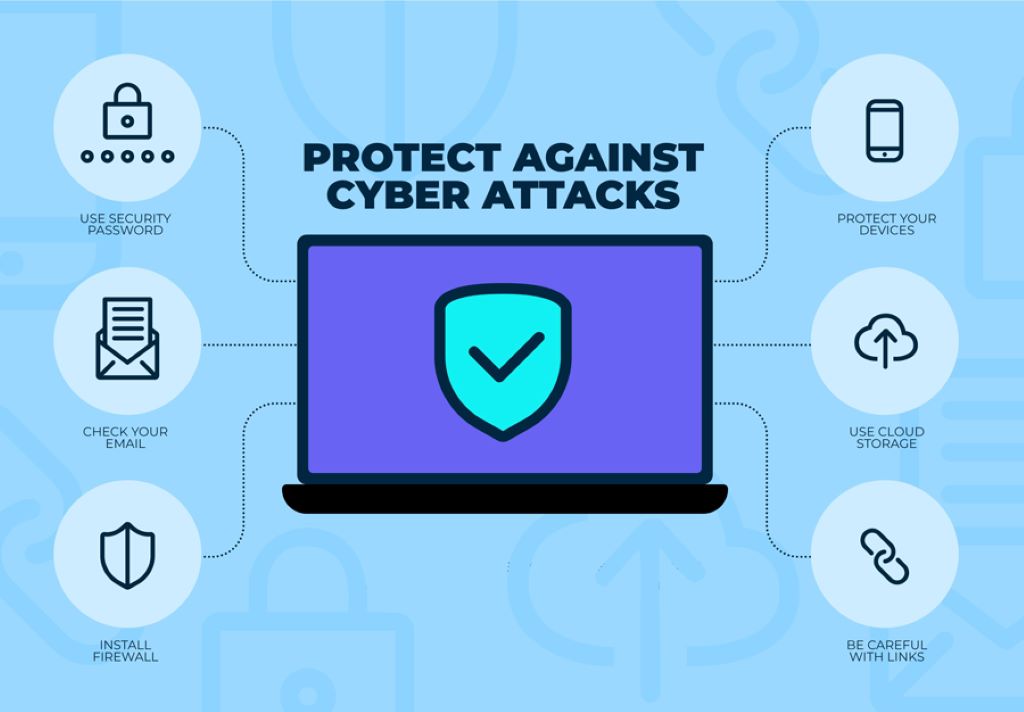
In today’s digital landscape, where our lives are intricately intertwined with technology, the threat of cyberattacks looms larger than ever before. Cybercriminals are becoming more sophisticated in their methods, and it’s crucial for individuals and organizations alike to take proactive steps to safeguard their digital assets. In this comprehensive guide, we will delve into the world of cybersecurity and explore effective strategies on how to protect against cyber attacks.
Understanding the Cyber Threat Landscape
1. What Are Cyber Attacks?
Cyber attacks encompass a wide range of malicious activities aimed at infiltrating, damaging, or stealing data from computer systems and networks. These attacks can take various forms, including malware, phishing, ransomware, and more.
2. Why Are Cyber Attacks on the Rise?
The digital world provides countless opportunities for cybercriminals. As our dependence on technology grows, so does the motivation for hackers to exploit vulnerabilities for financial gain, political motives, or simply for the thrill of causing chaos.
3. The High Cost of Cybersecurity Breaches
Explore the financial and reputational consequences that organizations face when they fall victim to cyberattacks. The costs of data breaches can be staggering.

Strengthening Your Cybersecurity Measures
4. Password Security
One of the simplest yet most effective ways to protect against cyber threats is to maintain strong, unique passwords for all your accounts. We’ll discuss best practices for creating and managing passwords.
5. Two-Factor Authentication (2FA)
Learn how 2FA can significantly enhance your online security by adding an extra layer of protection to your accounts.
6. Keeping Software Updated
Outdated software often contains security vulnerabilities that cybercriminals can exploit. Discover the importance of regularly updating your operating systems and applications.
7. Firewalls and Antivirus Software
Explore how firewalls and antivirus programs can act as gatekeepers, preventing unauthorized access and detecting malicious software.
8. Educating Yourself and Your Team
Cybersecurity is a shared responsibility. Find out how educating yourself and your employees can be a powerful defense against cyber threats.

Protecting Your Data and Privacy
9. Data Encryption
Learn about the role of encryption in safeguarding sensitive data, ensuring that even if it falls into the wrong hands, it remains unreadable.
10. Virtual Private Networks (VPNs)
Discover how VPNs can create a secure tunnel for your online activities, protecting your data from prying eyes.
11. Backing Up Your Data
Backing up your data is like an insurance policy for your digital life. We’ll discuss the importance of regular backups.
12. Email Security
Email is a common vector for cyber attacks. Understand the best practices for securing your email accounts.
Responding to Cybersecurity Incidents
13. Incident Response Plan
In the unfortunate event of a cyber incident, a well-defined incident response plan can minimize damage and recovery time.
14. Reporting Cyber Attacks
Know the importance of promptly reporting cyberattacks to the relevant authorities and agencies.
15. Continuous Monitoring and Adaptation
The cybersecurity landscape is ever-evolving. Learn how continuous monitoring and adaptation are essential to staying one step ahead of cyber threats.
Conclusion
In a world where digital security is paramount, taking proactive steps to protect against cyber attacks is not an option but a necessity. Understanding how cryptography in cybersecurity works is an essential step towards safeguarding your digital assets and sensitive information; by implementing the strategies and best practices outlined in this guide, you can significantly enhance your online security and reduce the risk of falling victim to cybercriminals.
FAQs
1. What is the most common type of cyber attack?
The most common type of cyber attack is phishing, where attackers use deceptive emails to trick individuals into revealing personal information or clicking on malicious links.
2. How often should I change my passwords?
It’s recommended to change your passwords every 3 to 6 months, and immediately if you suspect any unusual activity on your accounts.
3. Are free antivirus programs effective?
While free antivirus programs offer basic protection, paid solutions generally provide more advanced features and better security against cyber threats.
4. What should I do if I suspect a data breach?
If you suspect a data breach, you should immediately disconnect from the internet, assess the extent of the breach, and contact your IT department or a cybersecurity expert for guidance.
5. Can individuals be targeted by cyberattacks, or is it mostly organizations?
Both individuals and organizations can be targeted by cyberattacks. In fact, individual users are often the initial targets for cybercriminals before they move on to larger organizations.
